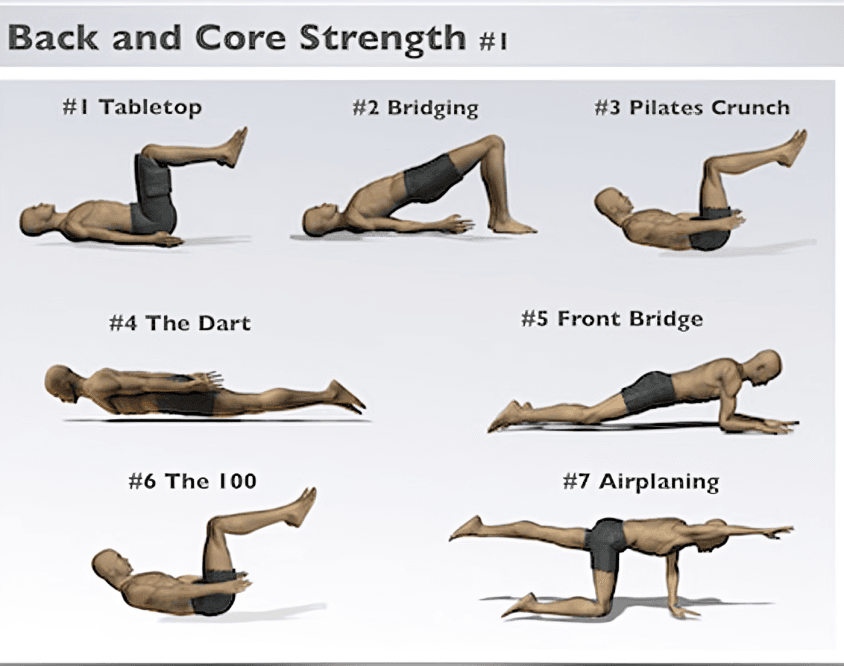
“
1
Functional training is not just for athletes or gym-goers; it's essential for everyone. The importance of functional training for everyday life is often overlooked, but it's crucial for improving overall mobility and strength. By focusing on movements that mimic daily tasks, the importance of functional training for everyday life helps ensure your body is prepared for everyday activities. Let's explore why incorporating functional training into your routine is so crucial for a healthier, more active life.1
1
”
Functional training enhances posture by strengthening the core muscles, improving spinal support, and reducing discomfort from prolonged sitting or standing. This improves body alignment, making walking and standing easier. 1
Functional training enhances agility, improving your ability to react quickly and navigate obstacles in daily life. This increased agility is useful in activities like driving, sports, or simply walking through a crowded space. 2
Grip strength is improved with functional training, which is essential for holding and carrying items. Strengthening the forearms and hands makes it easier to carry heavy objects, open jars, or perform daily tasks that require a strong grip. 3

Functional exercises teach you how to handle stressors like lifting or reaching without straining muscles or joints. Strengthening key muscle groups reduces the risk of injury and makes tasks like moving furniture or carrying heavy bags easier.
Improved balance is a key benefit of functional training. Strengthening stabilizing muscles reduces the risk of falls, making tasks like climbing stairs or carrying groceries easier and safer, particularly for older adults who are more prone to balance issues.4
Functional training helps prevent injuries by teaching efficient movement patterns. When muscles move correctly, it reduces strain during activities like bending or lifting, allowing you to perform daily tasks with less risk of injury. 5
Flexibility improves with functional exercises, particularly in the hips, shoulders, and legs. Enhanced flexibility makes movements like bending, reaching, or sitting comfortably easier, improving your overall range of motion for everyday activities.6
Functional training boosts muscle endurance, helping you sustain energy for prolonged activities. Whether walking, lifting, or doing chores, improved stamina reduces fatigue and enhances productivity in daily tasks.7

Joint mobility is a primary focus of functional training. Strengthening muscles around joints reduces stiffness and improves movement efficiency, making activities like sitting down or standing up more comfortable and decreasing the risk of joint-related injuries.
Functional training improves coordination by teaching your body to control movements in different directions. This coordination is valuable for tasks like driving, cooking, or playing with children, making movements more precise and efficient.8
Training under functional principles strengthens often-neglected muscles in areas like the lower back, hips, and glutes. These muscles play a key role in lifting, carrying, and walking, reducing discomfort and improving functional strength for daily tasks.9
Functional training uses compound movements, often incorporating weights or resistance bands, to build muscle strength. This improves tasks such as lifting heavy objects or pushing a cart, making these activities feel more manageable and less tiring.10
Unlike isolated exercises, functional training improves overall body mechanics by using multi-muscle movements. This approach helps with activities like running, biking, or gardening by training your body to move more efficiently and reducing strain on joints.11
Functional training promotes better body awareness by mimicking everyday movements. Learning to move with proper form and technique reduces strain and makes activities like standing up from a chair or bending down to tie shoes easier and safer.12
Functional exercises improve your body’s mobility, helping you transition between movements more fluidly. Tasks like standing up from a chair, turning while sitting, or getting in and out of the car become easier with increased mobility.13
Functional training works both large and small muscle groups together, improving muscular synergy. It helps you move better in daily tasks like lifting or bending, reducing fatigue and boosting efficiency. 14

By strengthening the core and lower back, functional training helps alleviate common issues like lower back pain. This makes everyday movements like bending or picking up items less painful, improving overall comfort and reducing discomfort in the back.
Incorporating functional exercises into your routine can help prevent chronic conditions such as arthritis and osteoporosis. Weight-bearing exercises improve bone density and joint health, leading to better mobility and less discomfort during everyday activities.15
Functional training speeds up injury recovery by focusing on functional movements. It restores strength, flexibility, and mobility, helping you regain full function after injuries and return to daily activities more quickly and safely.16
Functional training improves posture by strengthening the muscles of the upper back, shoulders, and core. This makes it easier to sit or stand for long periods, reduces the likelihood of slouching, and enhances comfort during everyday activities.17


